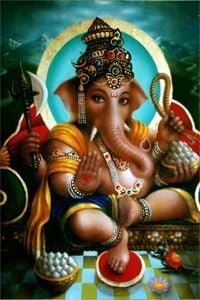Only logged in customers who have purchased this product may leave a review.
ASHTANGA YOGA – MASTERING THE EIGHTFOLD PATH FOR SPIRITUAL TRANSFORMATION [DYNAMIC MORPHIC FIELD]
₹2,100.00
This Ashtanga Yoga Dynamic Morphic Field is designed to embody the essence of the Eightfold Path outlined by Maharishi Patanjali, seamlessly integrating ethical principles, physical practices, mental focus, and spiritual awakening. Each limb—Yama, Niyama, Asana, Pranayama, Pratyahara, Dharana, Dhyana, and Samadhi—is energetically encoded to guide you on a transformative journey of holistic well-being and self-realization.
WHAT IS ASHTANGA YOGA
Ashtanga Yoga, or the “Eightfold Path of Yoga,” is a systematic framework for spiritual growth and self-realization as outlined by Maharishi Patanjali in the Yoga Sutras. It is a step-by-step guide that integrates ethical, physical, mental, and spiritual practices. Below are the eight limbs of Ashtanga Yoga:
1. Yama (Ethical Restraints)
The Yamas are universal moral principles that guide behavior toward others and society:
- Ahimsa (Non-violence): Practice kindness and avoid harm to others in thought, word, or action.
- Satya (Truthfulness): Always be truthful and authentic while ensuring that your honesty does not harm others.
- Asteya (Non-stealing): Avoid taking anything that doesn’t belong to you, including material items, time, or energy.
- Brahmacharya (Moderation): Exercise control over desires and avoid indulgence, including sexual and sensory pleasures.
- Aparigraha (Non-possessiveness): Let go of greed, attachment, and unnecessary accumulation of possessions.
2. Niyama (Personal Disciplines)
Niyamas are self-regulation practices aimed at inner discipline and personal growth:
- Shaucha (Cleanliness): Maintain purity of body, mind, and surroundings through hygiene and clean thoughts.
- Santosh (Contentment): Cultivate acceptance, gratitude, and satisfaction with what you have.
- Tapas (Self-discipline): Build inner strength through persistence and effort, even in the face of challenges.
- Svadhyaya (Self-study): Study spiritual texts and reflect on your thoughts, emotions, and actions to gain self-awareness.
- Ishvarapranidhana (Surrender to the Divine): Trust and surrender your actions to a higher power, accepting life’s outcomes.
3. Asana (Physical Postures)
- Purpose: Prepare the body for prolonged meditation by achieving a steady and comfortable posture.
- Benefits: Enhances physical health, balance, flexibility, and stability.
- Key Principle: Focus on ease and steadiness.
4. Pranayama (Breath Control)
- Definition: Regulation of breath to manage the flow of life energy (prana).
- Techniques:
- Puraka (Inhalation): Drawing in the breath.
- Kumbhaka (Retention): Holding the breath.
- Rechaka (Exhalation): Releasing the breath.
- Purpose: Balances the nervous system, calms the mind, and energizes the body.
- Advanced Practice: Focuses on extending life force and controlling energy flow for spiritual awakening.
5. Pratyahara (Withdrawal of Senses)
- Definition: Detaching the mind from the sensory world to focus inward.
- Purpose: Helps practitioners turn away from distractions and control their reactions to external stimuli.
- Practice: Engage in mindful observation without being affected by sensory inputs like sound, sight, or touch.
- Outcome: Deepens inner focus and prepares for meditation.
6. Dharana (Concentration)
- Definition: Fixing the mind on one point of focus.
- Examples: Concentrating on a mantra, a candle flame, the breath, or a deity.
- Purpose: Trains the mind to eliminate distractions and build mental clarity.
- Outcome: Creates a state of mindfulness, which is the foundation for meditation.
7. Dhyana (Meditation)
- Definition: Unbroken, sustained meditation where the practitioner is fully absorbed in the object of focus.
- Practice: Move beyond effort and concentration into a natural state of stillness.
- Purpose: Attain mental clarity, spiritual insight, and peace.
- Outcome: The mind becomes quiet, and awareness deepens.
8. Samadhi (Union or Absorption)
- Definition: The final stage of spiritual realization, where the practitioner merges with the object of meditation or universal consciousness.
- Stages of Samadhi:
- Savikalpa Samadhi: Meditation with awareness of duality and form.
- Nirvikalpa Samadhi: Complete absorption, transcending ego and form.
- Purpose: Attain liberation (moksha) and unity with the divine.
- Outcome: Realization of one’s true nature and the interconnectedness of all existence.
BENEFITS:
Yama (Ethical Restraints): Promotes harmonious relationships with others. Encourages moral integrity and trustworthiness. Reduces conflict by fostering non-violence and truthfulness. Cultivates a mindset of generosity and gratitude. Strengthens discipline and self-control. Builds inner peace by letting go of greed and attachment. Enhances societal well-being through ethical living. Lays a foundation for spiritual growth and higher consciousness.
Niyama (Personal Disciplines): Enhances inner cleanliness and mental clarity. Encourages contentment and acceptance of life’s circumstances. Builds resilience and perseverance through self-discipline. Promotes self-awareness through introspection and self-study. Strengthens spiritual connection and devotion. Improves emotional balance and self-confidence. Fosters mindfulness and a sense of purpose. Prepares the practitioner for deeper stages of yoga and meditation.
Asana (Physical Postures): Improves physical health, flexibility, and strength. Enhances body awareness and posture. Relieves stress and promotes relaxation. Prepares the body for prolonged meditation sessions. Boosts energy levels and reduces fatigue. Balances the nervous system and increases vitality. Supports joint health and improves circulation. Encourages a harmonious mind-body connection.
Pranayama (Breath Control): Enhances oxygen intake and improves lung capacity. Calms the mind and reduces anxiety. Balances energy flow and boosts vitality. Improves focus, concentration, and mental clarity. Helps in managing stress and emotional imbalances. Supports cardiovascular and respiratory health. Prepares the mind for meditation by inducing tranquility. Awakens spiritual energy (prana) for higher states of awareness.
Pratyahara (Withdrawal of Senses): Reduces sensory overload and external distractions. Strengthens willpower and self-discipline. Encourages detachment from material and sensory attachments. Fosters a deeper connection to the inner self. Prepares the practitioner for meditation and concentration. Enhances emotional regulation and mental clarity. Builds inner resilience and equanimity. Facilitates mindfulness and self-reflection.
Dharana (Concentration): Improves mental focus and attention span. Develops clarity of thought and purpose. Reduces mental clutter and enhances decision-making. Builds a stronger connection to the present moment. Prepares the mind for sustained meditation. Increases productivity and efficiency in daily tasks. Enhances creativity and problem-solving abilities. Leads to a calm and centered mind.
Dhyana (Meditation): Deepens spiritual awareness and self-realization. Promotes emotional stability and inner peace. Reduces stress, anxiety, and depression. Improves mindfulness and presence in everyday life. Enhances mental clarity and intuition. Facilitates a connection to universal consciousness. Increases compassion, empathy, and understanding. Leads to profound states of joy and fulfillment.
Samadhi (Union or Absorption): Achieves a state of ultimate bliss and liberation (moksha). Brings complete freedom from ego and attachments. Facilitates unity with the divine or universal consciousness. Provides a sense of oneness with all existence. Transcends duality, suffering, and limitations of the mind. Brings about profound wisdom and spiritual insight. Marks the culmination of self-realization and enlightenment. Creates lasting inner peace and eternal contentment.
USAGE: This audio can be used 1-2 times a day or as desired.
DETAILS:
The Ashtanga Yoga Energy Field, designed to guide you on a transformative journey through the eight limbs of yoga:
1. Yama (Ethical Restraints) Ahimsa (Non-violence): Avoid harm in thought, word, or action toward any living being. Cultivate compassion and kindness. Satya (Truthfulness): Be truthful, but tactfully ensure your honesty does not cause unnecessary harm. Asteya (Non-stealing): Refrain from taking what does not belong to you—material items, time, energy, or intellectual property. Brahmacharya (Moderation): Maintain balanced emotional and physical boundaries; avoid overindulgence. Aparigraha (Non-possessiveness): Release greed and attachment to possessions, fostering inner peace and simplicity.
2. Niyama (Personal Disciplines) Shaucha (Cleanliness): Supports physical, mental, and emotional purity, fostering clarity and positivity. Santosha (Contentment): Encourages gratitude, satisfaction, and acceptance in all circumstances. Tapas (Self-discipline): Enhances inner strength by overcoming laziness and sensory indulgence through disciplined routines like yoga and meditation. Svadhyaya (Self-study): Encourages self-reflection and study of sacred texts for wisdom and self-awareness. Ishvarapranidhana (Surrender to the Divine): Fosters devotion through prayer, meditation, or mantra chanting; helps release ego and attachment to outcomes.
3. Asana (Physical Postures) Strengthening the body for meditation. Calming the mind and creating a stable foundation for spiritual practices. Increased physical flexibility, balance, and vitality.
4. Pranayama (Breath Control) Helps regulate and channel life energy (prana) for physical, mental, and spiritual purification: Clears blockages in the body’s energy channels (nadis). Calms the mind and prepares for deeper meditation. Includes practices like: Ujjayi (Victorious Breath) for energy balance. Nadi Shodhana (Alternate Nostril Breathing) for cleansing nadis. Bhastrika (Bellows Breath) for vitality. Kapalbhati (Skull Shining Breath) for detoxification. Bhramari (Bee Breath) for mental calmness. Kumbhak (Breath Retention) for advanced meditation.
5. Pratyahara (Withdrawal of Senses) Detachment from sensory distractions (sight, sound, smell, taste, touch, and mind as the sixth sense). Includes mudras and kriyas to support sensory control and inner awareness. Enhances emotional regulation and prepares the practitioner for meditation.
6. Dharana (Concentration) Encourages single-pointed attention on objects such as a mantra, deity, or breath. Includes advanced techniques from Vigyan Bhairav Tantra to deepen concentration and self-connection.
7. Dhyana (Meditation) Includes various techniques like Trataka (Candle Gazing) and Supercausal Meditation for deeper absorption. Guides practitioners on entering, maintaining, and exiting meditation with focus and ease. Promotes mindfulness and inner peace.
8. Samadhi (Union or Absorption) Savikalpa Samadhi: Meditation with awareness of duality and form. Nirvikalpa Samadhi: Transcendence of ego and form, leading to liberation (moksha). Includes Dharana and Samadhi meditation techniques for self-realization and ultimate bliss.


![ASHTANGA YOGA – MASTERING THE EIGHTFOLD PATH FOR SPIRITUAL TRANSFORMATION [DYNAMIC MORPHIC FIELD]](https://selftosoulcreations.com/wp-content/uploads/2025/08/ahtanga.webp)




Reviews
There are no reviews yet.